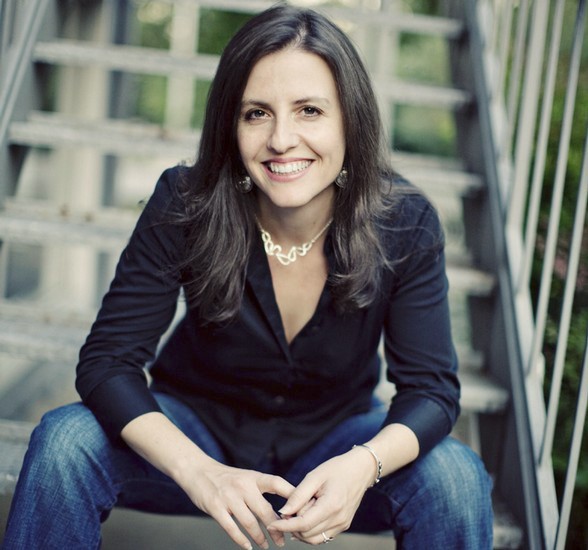Community Read culminates in Skloot’s Conversation

Courtesy Photo / gomemphis.com Rebecca Skloot, author of the Immortal Life of Henrietta Lacks
Apr 3, 2011
The Tuskegee Institute grew up to 6 trillion HeLa cells each week in an assembly line for mass distribution, and one scientist has estimated about 50 million metric tons of cells have grown from the first culture.
But until Rebecca Skloot investigated the woman behind the cell line, the so-called immortal woman remained an unknown in an unmarked grave.
The Conversation with Rebecca Skloot, author of the 2011 Community Reading Project selection “The Immortal Life of Henrietta Lacks,” began at 7 p.m. on Monday in Grand Rapids. The Fountain Street Church filled with members of the community, students, faculty and staff, most of whom had read Skloot’s book.
A book signing followed the talk, sponsored by the Brooks College of Interdisciplinary Studies, the GVSU Library and the University Bookstore.
Provost Gayle Davis gave an introduction to elaborate on the Community Reading Project.
“The program is now in its sixth year providing an opportunity for faculty, students, staff and community members to read a common book and examine it from multiple perspectives,” she said. “Each book that’s selected asks one or more of life’s big questions.”
Davis explained the premise of Skloot’s book simply.
“Ms. Skloot’s ‘The Immortal Life of Henrietta Lacks’ addresses such issues as the power of narrative, the potential to lose sight of humanity and the noble pursuit of knowledge and the resulting, sometimes exploited, history of medical research,” she said. “The book reminds us that although science offers hope in the face of disease and death, there is a need for vigilance in retaining our humanity and respect for those who have little voice in society.”
Skloot read two condensed excerpts from her book to familiarize the audience with the story of Henrietta Lacks, her family and their ethical dilemma.
Skloot, like many other students, first heard about the HeLa cells in a science class. But she became obsessed with the story of the women behind the culture, so she pursued the story. Despite obstacles, including members of the Lacks family, who were hesitant to speak at first, Skloot unraveled the story, a process that took ten years.
She sympathized with the Lacks family because her father, too, went through medical trauma.
“He got a virus that caused some pretty severe brain damage,” Skloot said. “He went from being this marathon-running dad to being a guy who couldn’t get up off the couch and lost his memory and couldn’t walk anymore. And he volunteered for a research study, and my job as a 16-year-old kid was to drive Dad to the hospital four times a week.”
She said having encountered the clinical research during her youth helped her connect with the Lacks family.
To pay for her research on the book, Skloot wrote freelance stories that took her to the Lacks family in either Baltimore or southern Virginia – publications compensated her travel costs, and she could work on her book in her free time.
However, the Lacks family had reason to distrust Johns Hopkins University and its researchers who used Henrietta Lacks’ cells without her or her family’s consent.
As a precedent, the Lacks family looked at the Tuskegee Syphilis Study, conducted between 1932 and 1972. During the study, scientists watched black men die of the preventable disease for the sake of research.
But Skloot said in the case of HeLa cells, the scientists considered their ethics fair practice. Whatever they did to Henrietta Lacks, they had already practiced on themselves.
“George Guy along with scientists all around the world had been trying to grow human cells outside of the body for decades, and it had never worked. All of the samples would die – they would last a few days, maybe a week, but eventually they would die,” Skloot said. “But Henrietta’s cells just never died.”
The cells removed from a tumor multiplied at an alarming rate not only in the lab, but also in Lacks. She died within a year of her cancer diagnosis.
Because of Lacks’ story and other stories of cell snatching from poor families in the 1950s, some black urban communities still have a bias against Johns Hopkins University, Skloot said.
“To this day, if you grow up in the neighborhood surrounding Hopkins, which is a predominantly black neighborhood, you grew up hearing that you don’t go outside at night because Hopkins will snatch you off the street and take you into the basement and do research on you,” Skloot said. “And you will never come out.”
To some extent, the Lacks family has found peace with the HeLa cells. Skloot said the family members take pride in the fact that Lacks has been able to help so many people.
But to this day, the family receives no compensation for the use of HeLa cells in research.
“There is a concern that if anyone does anything to the Lacks family – if they give them money – that it will set a precedent,” Skloot said. “Then what about the millions of other people whose cells have been used in research? In part, that hasn’t happened because there’s a concern of either setting a precedent or looking like an admittance of guilt that would open up some sort of liability.”
Next on the agenda, Oprah Winfrey and Alan Ball will produce an HBO movie of the book “The Immortal Life of Henrietta Lacks.” The Henrietta Lacks Foundation will receive a portion of the proceeds, and members of the Lacks family will act as consultants for the film.























